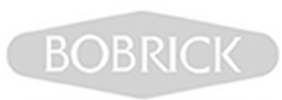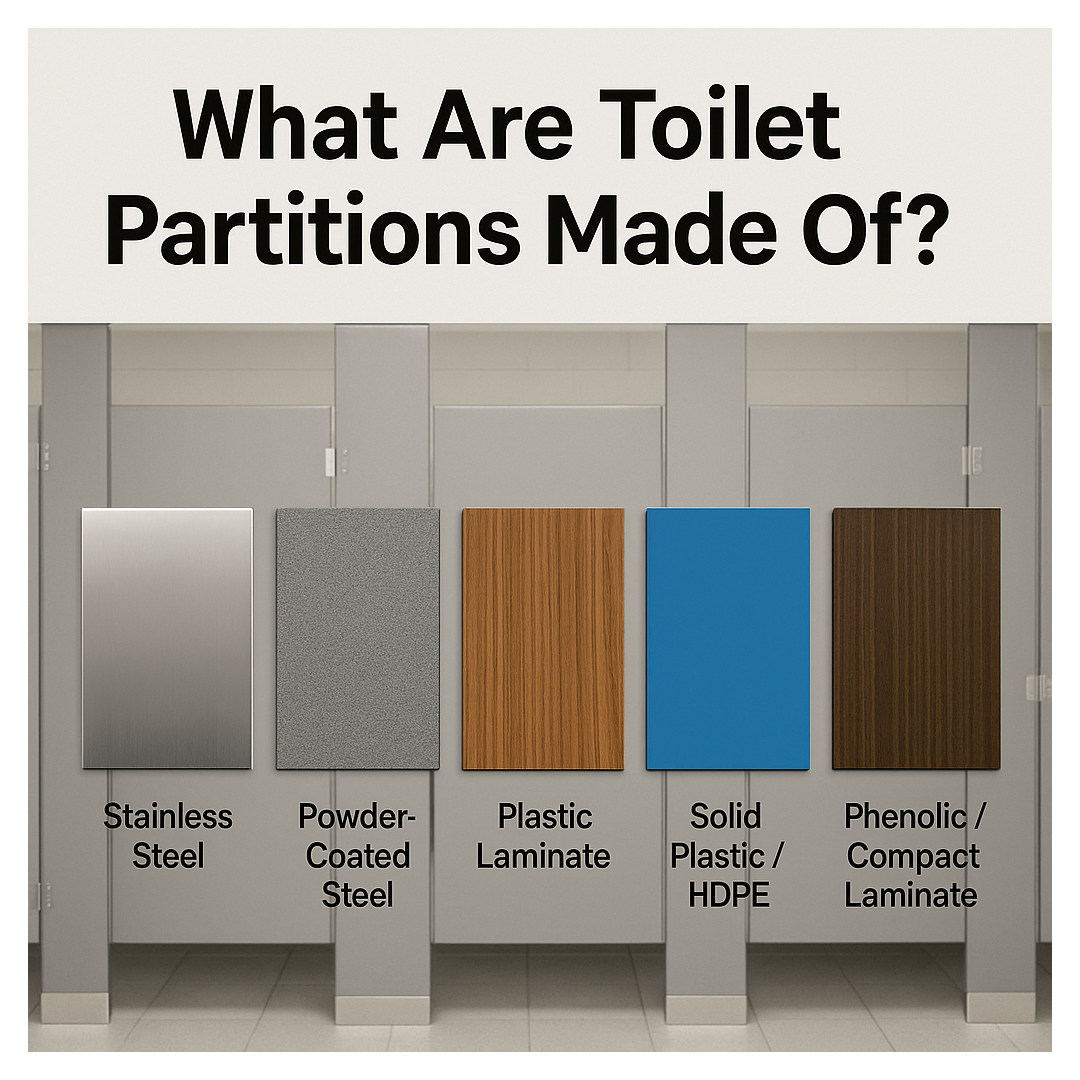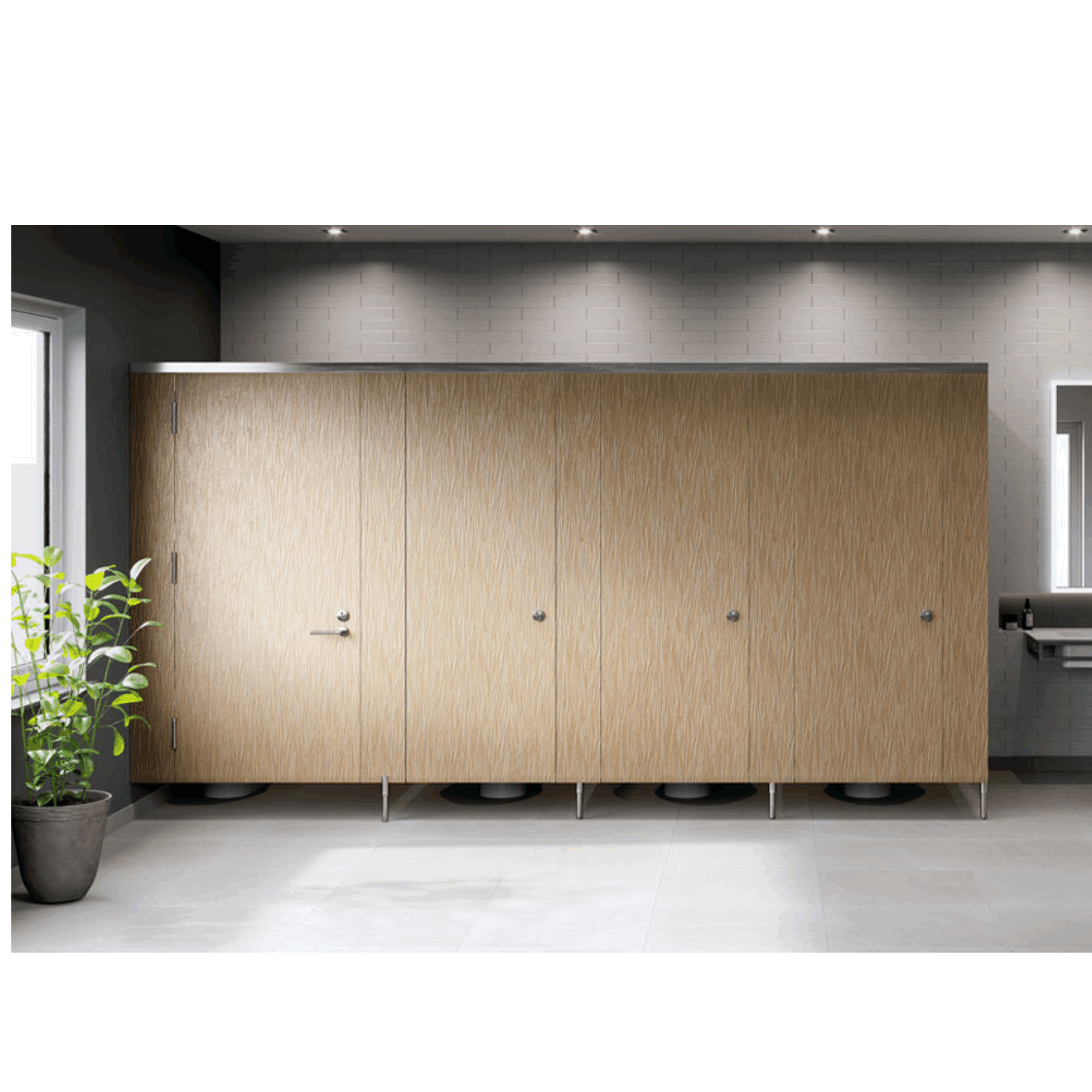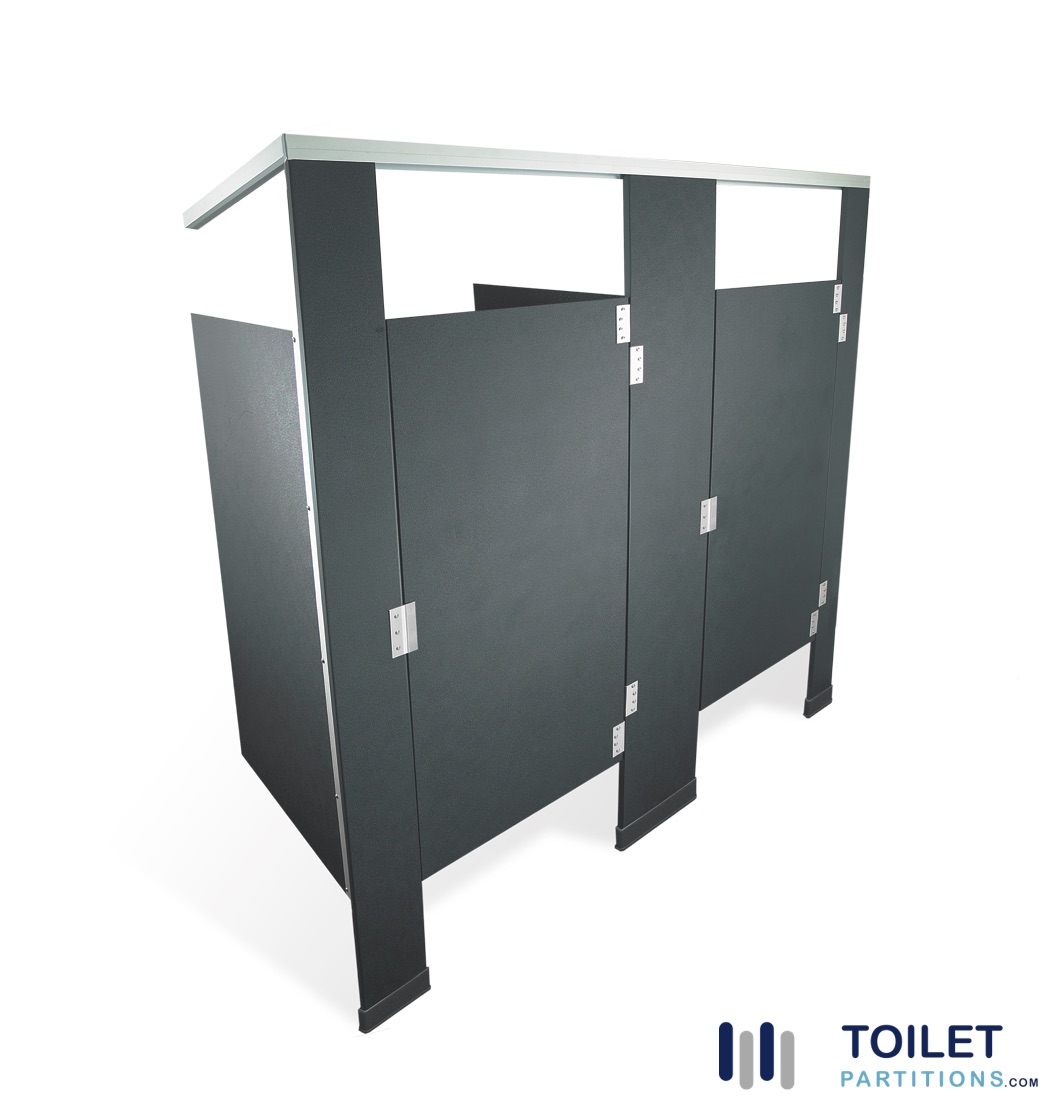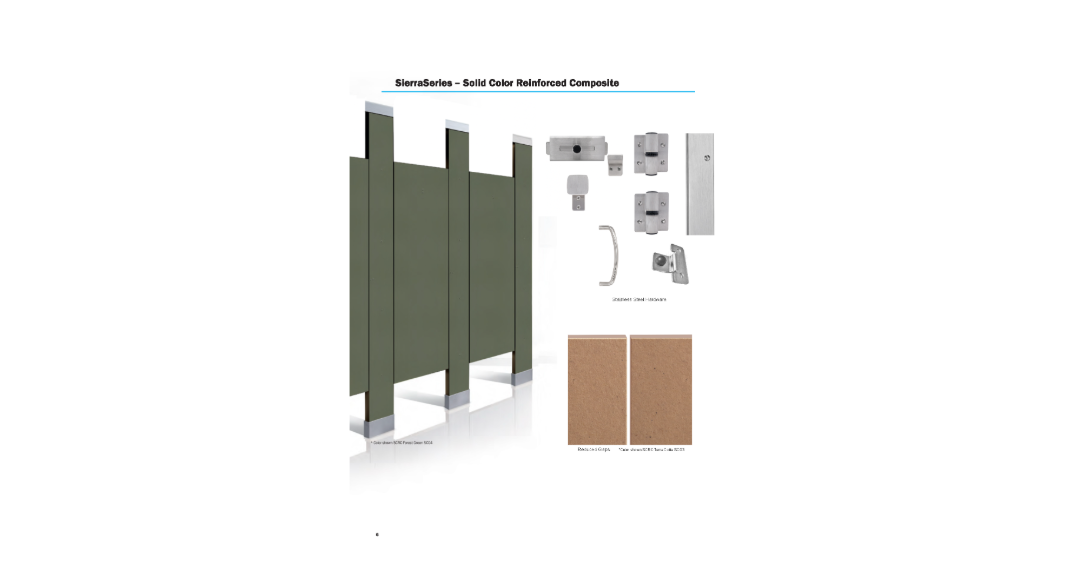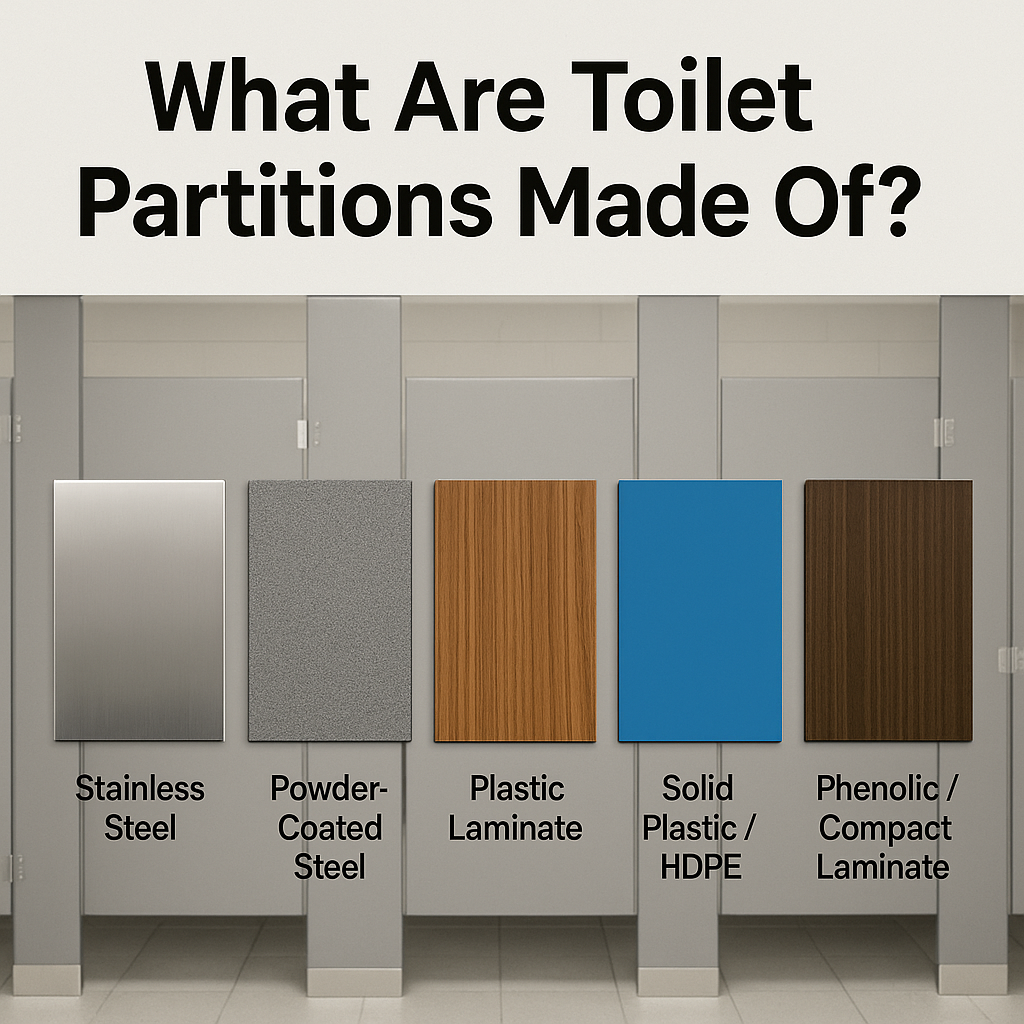What Are Toilet Partitions Made Of?
What Materials Are Used in Toilet Partitions?
Toilet partitions are made from a variety of materials including powder-coated steel, stainless steel, plastic laminate, solid plastic (HDPE), phenolic, compact laminate, and glass.
Each material type offers distinct advantages in terms of cost, durability, moisture resistance, and fire safety. Choosing the right material depends on usage frequency, environmental conditions, and code compliance such as ADA or ASTM E84 requirements.
How Is Powder-Coated Steel Used in Restroom Stalls?
Powder-coated steel partitions consist of a honeycomb cardboard core sandwiched between two steel sheets coated with powder enamel.
- Advantages: Economical, scratch-resistant, quick lead times
- Drawbacks: Prone to rust in high-moisture areas
- Use Case: Ideal for budget-conscious, low-traffic settings
What Are the Benefits of Stainless Steel Partitions?
Stainless steel partitions feature a brushed or textured finish and a core made of honeycomb or solid metal.
- Advantages: Sleek appearance, corrosion-resistant, fire-rated
- Drawbacks: Higher cost, fingerprints show easily
- Use Case: Premium, high-traffic restrooms
Why Choose Plastic Laminate Bathroom Stalls?
Plastic laminate partitions are made by bonding decorative plastic sheets to particleboard or MDF cores.
- Advantages: Custom designs, affordable
- Drawbacks: Susceptible to moisture and delamination
- Use Case: Dry environments like office buildings
What Makes Solid Plastic (HDPE) a Durable Option?
Solid plastic, or HDPE, is a high-density polyethylene that is solid throughout, offering exceptional durability.
- Advantages: Waterproof, graffiti-resistant, low maintenance
- Drawbacks: Heavier, higher initial cost
- Use Case: Schools, stadiums, and waterparks
See our HDPE product details at Solid Plastic Partitions.
Is Phenolic a Good Material for Toilet Partitions?
Phenolic partitions are made by pressing resin-soaked kraft paper into dense, durable panels.
- Advantages: Compact, fire- and water-resistant, high impact strength
- Drawbacks: Premium cost
- Use Case: Healthcare facilities and high-end public restrooms
What Is Compact Laminate?
Similar to phenolic but denser, compact laminate is made under higher pressure with more layers of resin paper.
- Advantages: Strong, moisture-resistant, aesthetic finishes
- Drawbacks: Higher cost, limited availability
- Use Case: Designer restrooms, institutional settings
Are Glass Toilet Partitions a Practical Choice?
Glass partitions use tempered, sometimes back-painted glass panels for a sleek, modern appearance.
- Advantages: Hygienic, stylish, durable
- Drawbacks: Expensive, requires specialized installation
- Use Case: Upscale commercial and hospitality restrooms
How Do Toilet Partition Materials Compare?
| Material | Cost | Durability | Moisture Resistance | Fire Rating | Graffiti Resistance | Sustainability | Lead Time |
|---|---|---|---|---|---|---|---|
| Powder-Coated Steel | Low | Moderate | Poor | ASTM E84 Class B | Low | Moderate | Fast |
| Stainless Steel | High | High | Good | NFPA 101 Compliant | Moderate | High (Recyclable) | Moderate |
| Plastic Laminate | Low | Low | Poor | Class C | Low | Low | Fast |
| HDPE (Solid Plastic) | Medium | High | Excellent | Class B | High | High (Recyclable) | Moderate |
| Phenolic | High | High | Excellent | ASTM E84 Class A | High | Moderate | Slow |
| Compact Laminate | High | Very High | Excellent | Class A | High | Moderate | Slow |
| Glass | Very High | High | Excellent | Tempered Safety Glass | Moderate | Low | Custom |

